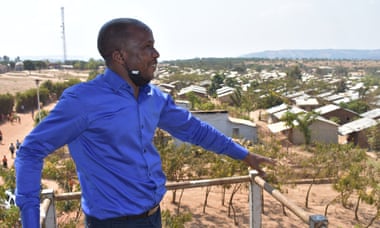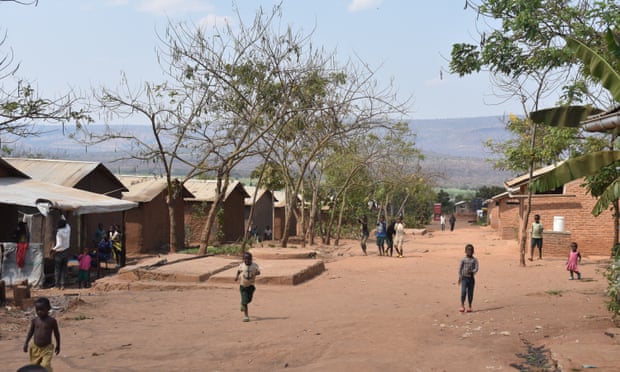The profile of people registering at the two health centers in Mahama refugee camp, Rwanda, is changing. Doctors no longer focus on diseases such as malaria and diarrhoea, but increasingly on conditions such as diabetes and hypertension. And the patients are getting younger.
Among those registered are a six-year-old with hypertension (high blood pressure); a two-year-old with respiratory problems; a woman in her early 40s in renal failure – she needs a kidney transplant after developing hypertension during pregnancy – and a woman in her 20s who was first diagnosed with diabetes when she fell into a coma.
“Here, communicable diseases [such as malaria and diarrhoea] are no longer a problem,” says Dr Philbert Munyemana, clinical lead for Mahama 2 health center. “We’ve got a good water supply and prevention and management is going well. Now, we are seeing more non-communicable diseases; they are a priority.”
NCDs are simply that; Unlike, say, a virus, you can’t catch them. Instead, they are caused by a combination of genetic, physiological, environmental and behavioral factors. The main types are cancers, chronic respiratory illnesses, diabetes and cardiovascular disease – heart attacks and stroke. Approximately 80% are preventable, and all are on the rise, spreading inexorably around the world as aging populations and lifestyles pushed by economic growth and urbanization make being unhealthy a global phenomenon.
NCDs, once seen as illnesses of the wealthy, now have a grip on the poor. Disease, disability and death are perfectly designed to create and widen inequality – and being poor makes it less likely you will be accurately diagnosed or treated.
Investment in tackling these common and chronic conditions that kill 71% of us is incredibly low, while the cost to families, economies and communities is staggeringly high.
In low-income countries NCDs – typically slow and debilitating illnesses – are seeing a fraction of the money needed being invested or donated. Attention remains focused on the threats from communicable diseases, yet cancer death rates have long sped past the death toll from malaria, TB and HIV/Aids combined.
‘A common condition’ is a new Guardian series reporting on NCDs in the developing world: their prevalence, the solutions, the causes and consequences, telling the stories of people living with these illnesses.
Tracy McVeigh, editor
“,”credit”:””,”pillar”:0}”>
QuickGuide
A common condition
Show
The human toll of non-communicable diseases (NCDs) is huge and rising. These illnesses end the lives of approximately 41 million of the 56 million people who die every year – and three quarters of them are in the developing world.
NCDs are simply that; Unlike, say, a virus, you can’t catch them. Instead, they are caused by a combination of genetic, physiological, environmental and behavioral factors. The main types are cancers, chronic respiratory illnesses, diabetes and cardiovascular disease – heart attacks and stroke. Approximately 80% are preventable, and all are on the rise, spreading inexorably around the world as aging populations and lifestyles pushed by economic growth and urbanization make being unhealthy a global phenomenon.
NCDs, once seen as illnesses of the wealthy, now have a grip on the poor. Disease, disability and death are perfectly designed to create and widen inequality – and being poor makes it less likely you will be accurately diagnosed or treated.
Investment in tackling these common and chronic conditions that kill 71% of us is incredibly low, while the cost to families, economies and communities is staggeringly high.
In low-income countries NCDs – typically slow and debilitating illnesses – are seeing a fraction of the money needed being invested or donated. Attention remains focused on the threats from communicable diseases, yet cancer death rates have long sped past the death toll from malaria, TB and HIV/Aids combined.
‘A common condition’ is a new Guardian series reporting on NCDs in the developing world: their prevalence, the solutions, the causes and consequences, telling the stories of people living with these illnesses.
Tracy McVeigh, editor
More than 1,200 patients with non-communicable diseases (NCDs) are registered at the camp’s health centers, accounting for about 5% of the total caseload. Numbers are rising, however, with medical staff seeing new cases every month.
Dieudonne Yiweza, senior regional public health officer for the east and Horn of Africa at the UN refugee agency, UNHCR, said NCDs, traditionally associated with older people living in more developed urban settings, are affecting people in refugee camps at a younger age.
“Before, we said NCDs affect urban settings. Now, they are attacking refugee settings. Before, we could see they were affecting older adults and elderly people. Now, they are affecting children and young people. For refugees, this is a challenging situation,” says Yiweza.
“The conditions where refugees are living can accelerate the onset of, and aggravate, NCDs.” Diabetes can lead to eye problems, and hypertension can bring on various complications, including stroke. “Now, it’s very common [in the east and Horn of Africa region] to see people as young as 10 or 15 [having a] stroke,” adds Yiweza. “[NCDs are] affecting everyone.”
Poor housing and a limited diet – often lacking protein – are contributing factors, as is trauma, he says.
NCDs make up seven of the world’s top 10 causes of death – accounting for more deaths than HIV, malaria, tuberculosis, diarrhoea and all other communicable diseases combined. Without a strong primary healthcare system, NCDs often go unrecognized until they cause significant disability or premature death. They also make people more vulnerable to infectious disease.
Yiweza admits that NCDs are often overlooked in refugee settings. “We don’t have people trained to manage NCDs with limited resources,” he says. It was this gap in care that prompted him to set up a program to tackle the diseases in refugee camps across East Africa.
Mahama refugee camp lies an hour’s drive along an unpaved road from the nearest settlement in the east of Rwanda. It is home to 58,000 of the country’s 127,000 refugees, most of whom fled conflict in Burundi and the Democratic Republic of the Congo. Some people have lived in Rwandan camps for 28 years while the most recent arrivals have been there for seven, unable to return home.
On a recent, highly controlled visit to Mahama, the Guardian was forbidden from talking to refugees by camp authorities, or seeing where they live, and only allowed to go to the camp’s two health centres, one run by Save the Children, the other by non-profit Alight. Both have dedicated NCD programs that started in 2017 and 2018.
The health centers conduct screening in the community at least four times a year. This involves testing blood pressure and blood sugar levels to check for hypertension and diabetes. Last year, screening for cervical and breast cancer – the two cancers that most affect women in Rwanda – started in the camp. In the two sessions so far, staff screened 285 people and found seven women with breast cancer, one woman who had developed signs of cervical cancer, and 25 women with precancerous conditions of the cervix.
Teams of community health workers monitor people diagnosed with NCDs, sharing information about diet, and checking they take any prescribed medication. They also encourage others to attend screening sessions.

Liliose Mukankuranga, community health supervisor, says some of her patients do not eat enough. “One problem is nutrition,” she says. “These people don’t have anything. They are sick but there’s no support and they have nothing to eat.”
People living with NCDs in camps are entitled to the maximum amount of financial assistance available from the World Food Program – 7,000 Rwandan francs (£5.63) a month.
“I don’t think one can make ends meet with that,” says Dr Zézé Beauvogui, public health officer at UNHCR. “We know that is not enough. Refugees would like better but if that’s what is available, that is what they can get.”
Beauvogui faces difficult decisions about who gets care and treatment if complications arise.
Five people with renal failure – a complication of hypertension – have been relocated to Kigali so that they can have dialysis three times a week. Each session costs £208. Kidney transplants are not available in Rwanda so the only option for them is resettlement in another country, which UNHCR can help apply for. But compatibility tests for a donor – a condition of resettlement – cost 1.6m Rwandan francs each. “Can you imagine how many malaria cases you can treat with that?” says Beauvogui. “The [UNHCR] budget is going down while the need is going up. You see the difficult decisions I am faced with.”

From behind his desk in his air-conditioned office at the entrance to Mahama, André Vuganeza, the camp manager, says: “I think the NCDs, it’s not a big issue in our community. We have other problems. For us malaria is more serious than NCDs.
“Even if you see the numbers, if you see people with NCDs, they are above 45.”
Doctors see it differently. Dr Benoit Ndagijimana, medical officer at Mahama 1 health centre, says: “Our community needs to be aware of NCDs. There is a problem… We have been seeing rising cases in terms of numbers. The root cause is that people may not be aware of the causes of NCDs. What is serious is that they are silent. You can live with hypertension unknowingly while it is causing complications.
“When people develop complications, they cannot afford care on their own. The interventions are very expensive. We need to be here raising awareness, starting treatment early to prevent complications.”
Sign up for a different view with our Global Dispatch newsletter – a roundup of our top stories from around the world, recommended reads, and thoughts from our team on key development and human rights issues, delivered to your inbox every two weeks:
Sign up for Global Dispatch – please check your spam folder for the confirmation email
www.theguardian.com
George is Digismak’s reported cum editor with 13 years of experience in Journalism